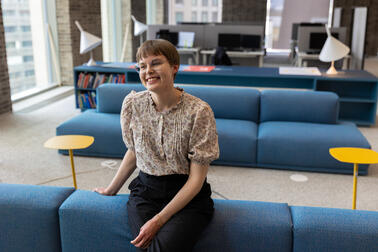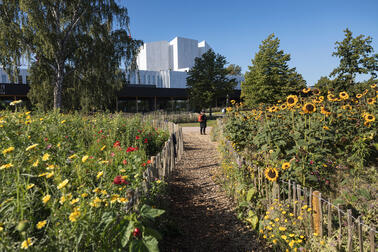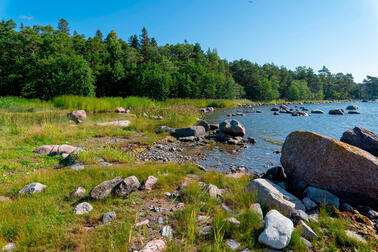Lassi Jalonen from Vuosaari does not like lawns.
“They are actually just green asphalt, with nothing growing on them or living in them. I can understand small lawns, but large areas do not make any sense,” he says.
Jalonen is an amateur entomologist. Every summer, he works part time on mapping nature and is involved in the lepidopterist association Suomen Perhostutkijain seura. It is because of insects that Jalonen has submitted proposals to OmaStadi in which lawn areas in the city are replaced with meadows.
OmaStadi is a direct influencing tool for residents of Helsinki: it is a form of participatory budgeting where residents can propose improvements to Helsinki. The proposals are then put to a vote, and the City implements the most popular proposals.
Jalonen’s proposals concerning meadows have advanced to the implementation phase. This summer, meadows and new vegetation areas will be established in e.g. the park area in Kurranummi and the Kottaraispuisto park. Later on, plants will be planted and meadows created in other areas as well.
Lassi Jalonen hopes to see wild plants on the future meadows.
“Different plants in the bellflower family, stonecrop, daisies, maiden pink and other carnations, viper’s bugloss. They grow in dry places, and some of them are low and others tall,” he lists.
Jalonen knows a lot about the benefits of meadows. In the daytime, they serve as excellent locations for day-active pollinators, such as bees, bumblebees and butterflies. If the plants are excellent honey plants, moths will be able to use them for nutrition at nights.
You can see plenty of green if you look at Helsinki from above. The city has good air quality and it is comfortable.
A friend of nature
Jalonen admits that he prefers diverse urban nature. He lives in Vuosaari and is involved in the local Vuosaari-Seura association that runs Sannan Sauna located in Kallahti. In the winter, visitors to Sannan Sauna can go winter swimming, which is also thanks to OmaStadi.
Over the years, Jalonen has submitted OmaStadi proposals in his own and the Vuosaari association’s name. According to Jalonen, the OmaStadi process is easy. To him, developing urban nature begins with little things.
“When drafting my proposals, I think about how feasible they are. The best proposals clearly increase comfort or functionality for residents.”
Jalonen likes Vuosaari especially because it is so close to nature. His favourite places include the Vuosaarenhuippu area and the forested nature reserve in Mustavuori.
“Did you know that the Vuosaarenhuippu area is one of the largest steppe areas in Finland? There are far too few vast, dry and open areas in Finland.”
As a whole, Jalonen thinks that Helsinki is a lush city. He understands dense urban construction and points out that nature is never far away even in densely built areas.
More untamed nature in the city




